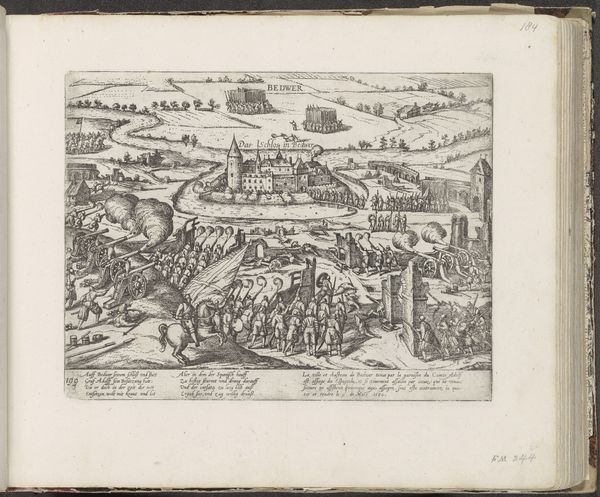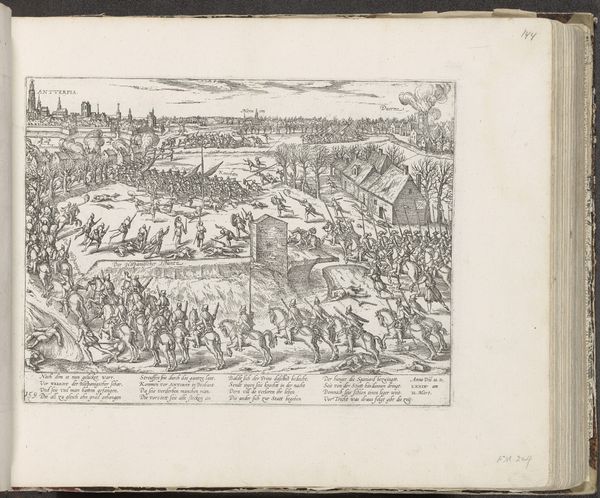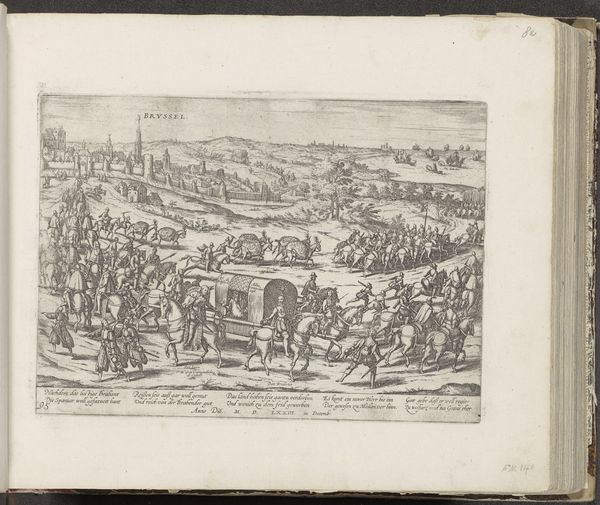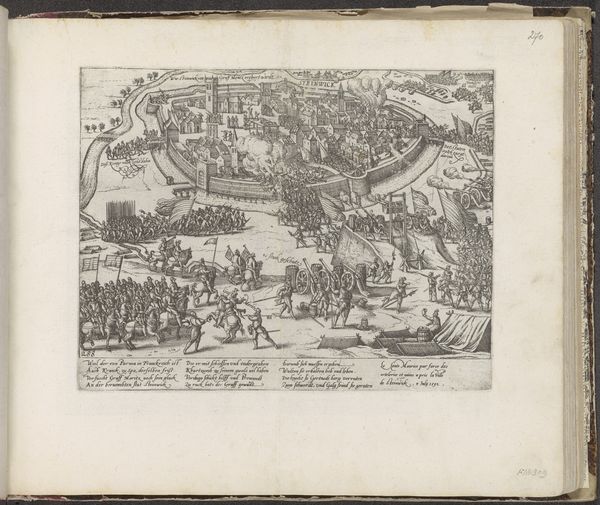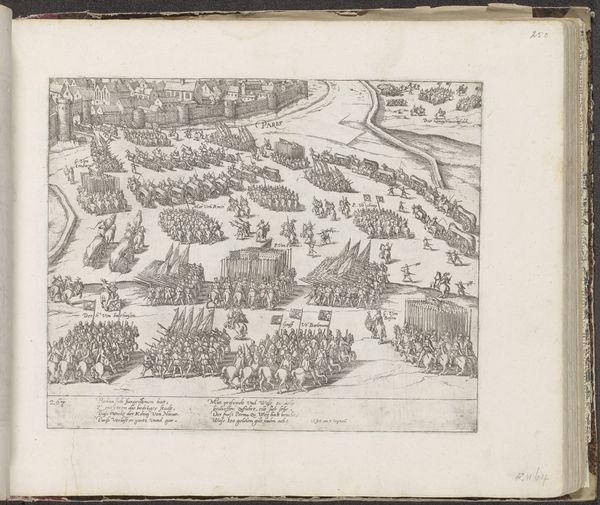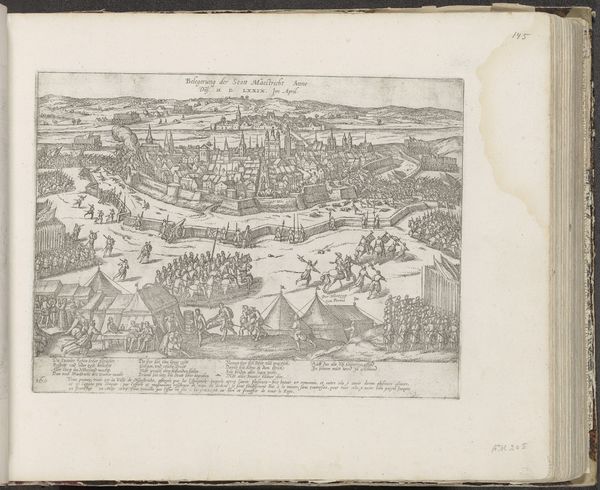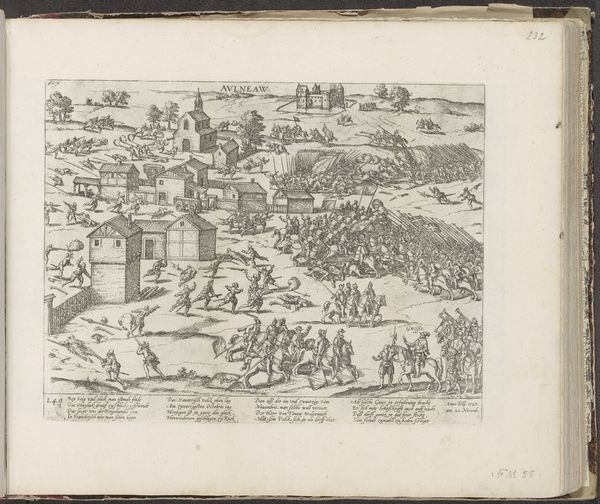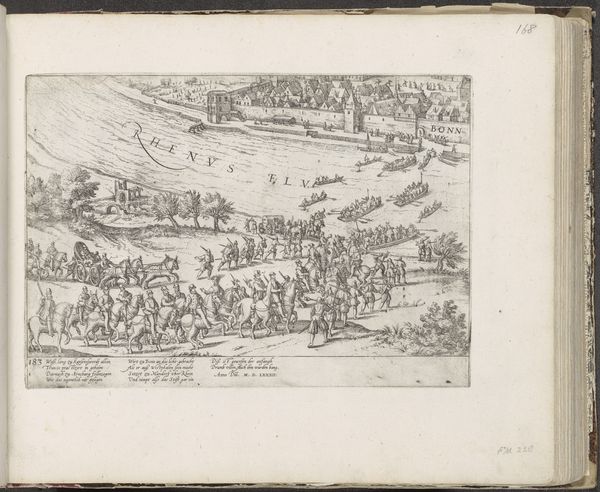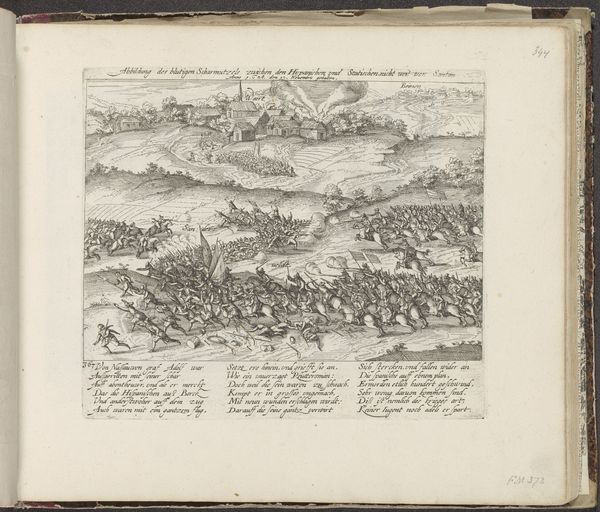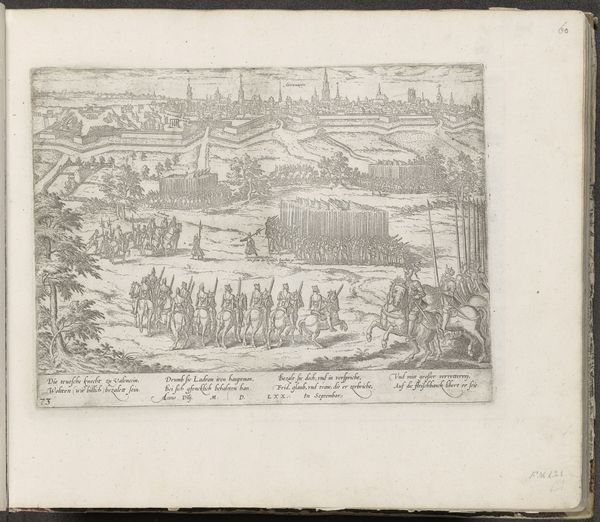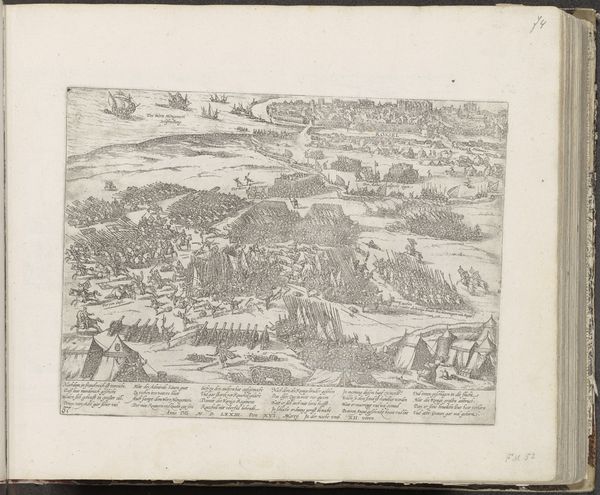
print, engraving
toned paper
dutch-golden-age
pen sketch
sketch book
personal sketchbook
sketchwork
pen-ink sketch
pen work
sketchbook drawing
cityscape
history-painting
storyboard and sketchbook work
sketchbook art
engraving
Dimensions: height 207 mm, width 287 mm
Copyright: Rijks Museum: Open Domain
Frans Hogenberg’s etching, "Truchsess trekt naar Delft, 1584," depicts the arrival of troops at Delft. Observe how the city, with its towering spires and fortified walls, dominates the horizon, symbolizing not just a physical place, but a stronghold of power and resistance. The procession of soldiers, meticulously rendered, evokes the grand entrances of Roman emperors. The act of entering a city has always been laden with meaning. In ancient times, it was about triumph; here, it's fraught with the tensions of allegiance and conflict. Consider the horse. Since antiquity, the horse has been a symbol of power and nobility. We see it in Roman equestrian statues, in Renaissance portraits, and here, embodying both military might and the social status of those who ride them. This symbol, ever-present, speaks to our collective, subconscious understanding of authority and control, echoing through the corridors of time. The image engages us on a deep level; it brings forth the emotional resonance of historical events. The cyclical nature of human conflict and the enduring symbols of power remind us of our shared past, resurfacing in different forms, yet echoing the same fundamental themes.
Comments
No comments
Be the first to comment and join the conversation on the ultimate creative platform.
